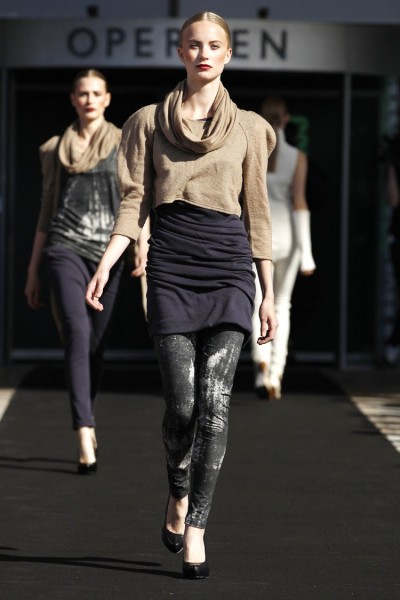
Copenhagen Fashion Summit

A Movement is Brewing: Guest post by Nerida Lennon
Last week more than a thousand key fashion stakeholders from around the globe descended on Copenhagen to join a movement to transition the fashion industry to sustainability. Copenhagen Fashion Summit is the world’s largest and most important conference on sustainable fashion and CSR. Like most things in Denmark, it embodied professionalism, style and sophistication. The conference was held in the spectacular Danish Opera House and participants were welcomed by Her Royal Highness Crown Princess Mary of Denmark wearing an H&M Conscious Collection dress. Key speakers were A-list quality, including supermodel Erin O’Connor, H&M, Gucci and the United Nations and European Commissioner for Climate Action. While these speakers were impressive, one presenter stood out most for his offbeat approach.

Bruno Pieters was on many peoples’ “must see” lists and he exceeded expectations. His transformational journey from being the creative director of Hugo Boss to creating a 100 per cent transparent label is a beacon of light for the fashion industry to aspire to. Inspired by his travels in India, Bruno began the world’s first 100 per cent transparent label called Honest By. However, he doesn’t prescribe to the terms eco or sustainable fashion – he views Honest By as simply good fashion. Devoid of statistics or jargon, his presentation was filled with inspirational quotes which rang true to his values. Pieter’s message was simple but held a powerful truth: follow your intuition, your values and be mindful. He said that “if you love life you respect it and want to protect it.” While this may seem simplistic, it was an honest and authentic approach that didn’t attempt to greenwash.

Common threads to emerge from the conference as a whole were not typical of norm fashion industry culture. Collaboration and goodwill are often found in the more alternative or grassroots sustainable fashion circles, but these words were also crossing the lips of fashion forward people such as the CSR Manager for Gucci. Another term that once would have scared many brands from communicating their efforts in sustainability from the fear of being criticised was ‘transparency’.


For consumers the message was that sustainable fashion is here to stay and that fashion brands are aware that surviving in the future means they must innovate and adapt to the demands of consumers or be threatened with extinction. Sustainability in fashion is much more than a trend, it is a necessity. They spoke of designing not only for physical durability and longevity of fashion products but also emotional durability. H&M observed that fashion consumers have gone from being labelled ‘hippies’ to eco-fashionistas and it’s now cool to be responsible.


Nearing the end of the conference, youth from 17 business and design schools stood firmly on stage to declare their demands for a fashion industry they are about to inherit. They demanded: brands create memories, not junk; to see a total cost tag, not just a price tag; to cut the crap and make sustainable fashion an easy choice; and that hippie be turned into gaga. These demands may seem somewhat idealistic but without a vision for a better fashion industry we have nothing to move towards.


Conference participants were also spoilt with a short runway show presenting sustainable fashion garments created for a sustainable design competition. You could hear the apprehension as the audience was told that garments were created with varied sustainable fashion techniques and fabrics, such as seaweed and organic hemp. However, rather than witnessing conceptual pieces of sustainable fashion, the catwalk flowed with outfits that were made to impress.
Impressively the conference closed with a written commitment to drive the fashion industry to sustainability. Every participant at the conference walked away with a Code of Conduct for the Fashion and Textile Industry stating that fashion industry must reinvent itself on this non-return journey. It is the first comprehensive roadmap of its kind to illuminate a path to sustainability in the fashion industry. Let’s hope the rest of the world was listening!


